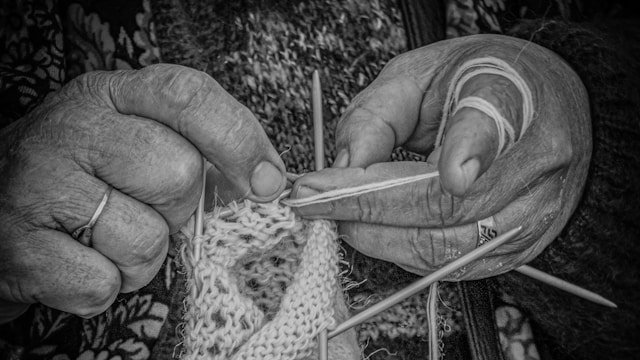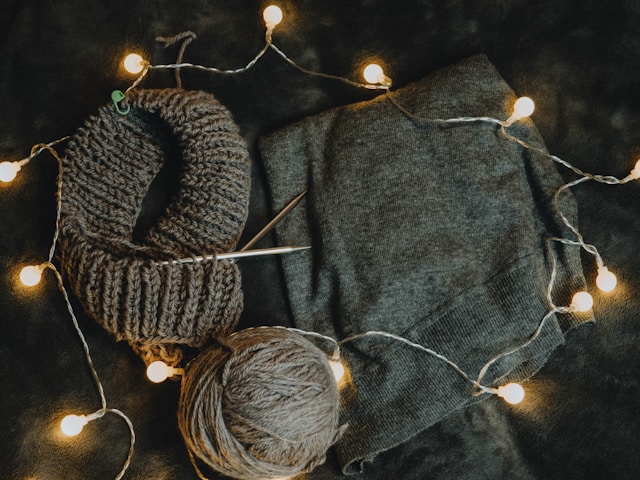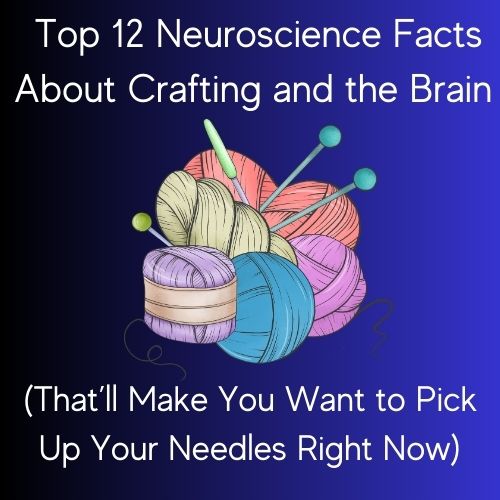You already know that crafting feels good. That satisfying click of knitting needles, the rhythmic pull of thread through fabric, the trance-like state of stitching row after row. But did you know that fiber arts are basically a superpower for your brain?
Science is finally catching up to what crafters have known all along—making things with your hands is insanely good for you. Whether you knit, crochet, quilt, embroider, or sew, you’re not just making art. You’re rewiring your brain, sharpening your mind, and giving yourself a serious neurological boost.
Top 12 Neuroscience Facts About Crafting and the Brain
Let’s dive into 12 jaw-dropping neuroscience facts about crafting and the brain—and why your creative hobby is way more powerful than you think.

1. Crafting Activates the Brain Like a Workout (Without the Sweat)
You know how lifting weights strengthens your muscles? Crafting does the same thing for your brain. When you follow a pattern, choose colors, or execute a precise stitch, you’re activating multiple brain regions at once—the sensory, memory, motor, and problem-solving centers all light up like a Christmas tree.
This means that every time you craft, you’re keeping your brain sharp, flexible, and engaged—no treadmill required.
2. Knitting and Crochet Work Like Mental Tai Chi
There’s a reason these crafts are so ridiculously calming—they create a state called bilateral rhythmic movement, which is basically a fancy way of saying your hands move in a steady, coordinated pattern.
Why does this matter? Because rhythmic, repetitive movements synchronize the brain’s hemispheres, reducing anxiety, improving focus, and even helping people with ADHD and PTSD manage symptoms more effectively.
Think of it like meditation with yarn.
3. Your Brain LOVES a Repetitive Stitch Pattern
Ever noticed how soothing it feels to work on a repetitive pattern? That’s because your brain thrives on predictability. Repeating the same stitch over and over reduces the mental load, allowing your brain to enter a calm, flow-like statewhile still keeping your hands busy.
Bonus: This is why simple projects like granny squares or straight-row knitting feel especially meditative—your brain loves the repetition!
4. Creating with Your Hands Boosts Dopamine (a.k.a. The “Feel-Good” Chemical)
That rush you get when you finish a project? That’s dopamine, baby—your brain’s natural reward system kicking in. Dopamine is responsible for motivation, focus, and pleasure, and crafting is a proven way to increase its production.
Even better? Studies suggest that just the anticipation of starting a new project can trigger a dopamine hit—so go ahead, buy that new skein of yarn guilt-free.

5. Crafting Reduces the Risk of Dementia
Yep, you read that right. Engaging in complex, hands-on activities like knitting, embroidery, and quilting has been linked to a lower risk of cognitive decline.
One study found that older adults who regularly engaged in crafting had up to a 50% reduced risk of developing dementia—a stronger effect than even some physical activities.
So the next time someone tells you that crafting is just a hobby, tell them it’s actually brain training for longevity.
6. Making Art Builds New Neural Pathways (Even If You’re a Beginner!)
You don’t have to be a master quilter or expert knitter to get the brain benefits of crafting. Every time you learn a new stitch or technique, you’re forming new neural connections—literally growing your brain.
Even small creative challenges—like trying a new pattern or improvising a design—strengthen problem-solving skills, memory, and cognitive flexibility.
7. Hand-Eye Coordination Improves Brain Function
Hand stitching, embroidery, and intricate fiber arts enhance fine motor skills—which may not sound like a big deal until you realize that fine motor function is directly linked to brain health.
Crafting forces the brain to coordinate complex, precise movements, strengthening neural pathways that help with spatial awareness, problem-solving, and memory retention.
8. Crafting Lowers Cortisol Levels (a.k.a. The Stress Hormone)
Chronic stress wrecks the brain—too much cortisol can damage memory, weaken focus, and lead to burnout. The good news? Crafting is scientifically proven to reduce cortisol levels.
The repetitive movements of fiber arts activate the parasympathetic nervous system, which tells your body: Hey, it’s okay to relax now.
In other words, crafting is one of the most enjoyable stress-management tools out there—and it’s cheaper than therapy.
9. Creativity Strengthens Emotional Resilience
Crafting isn’t just good for your thinking brain—it’s a powerhouse for your emotional brain, too. Studies show that creative activities help regulate emotions, increase frustration tolerance, and build mental resilience.
Translation? The more you craft, the better you get at handling life’s ups and downs.
10. Your Brain Doesn’t Know the Difference Between Thinking About Crafting and Actually Doing It
Wild, right? Studies on mental rehearsal show that simply visualizing yourself crafting activates the same brain regions as actually doing it.
This means that imagining yourself stitching, quilting, or knitting can have similar calming effects as physically engaging in it—which is great news for anyone who can’t craft as often as they’d like.
11. Crafting Improves Sleep Quality
Struggling with sleep? Ditch the screens before bed and try a little nighttime stitching instead. The calming, repetitive nature of fiber arts helps regulate melatonin production, making it easier to fall asleep and stay asleep.
Bonus: If racing thoughts keep you awake, a few minutes of slow hand stitching can quiet the mind and prepare the body for deep rest.
12. Making Things With Your Hands Enhances Overall Brain Plasticity
Brain plasticity—the ability of the brain to adapt and change—is one of the biggest indicators of long-term cognitive health.
The more new skills, movements, and creative decisions you make while crafting, the more you encourage neural growth and adaptability. This makes crafting an ideal lifelong brain-boosting activity—keeping the mind sharp well into old age.

Brain-Boosting Crafting Exercise: The Non-Dominant Hand Challenge
Want to challenge your brain even more while crafting? Try this non-dominant hand exercise to shake up your neural pathways:
- Choose a simple, repetitive craft task—like threading a needle, tying a knot, or making a basic stitch.
- Try performing the task with your non-dominant hand.
- Notice how your brain and body adjust to the new movement.
- Repeat for a few minutes, then switch back to your dominant hand.
This simple exercise forces the brain to engage new motor pathways, improving coordination and strengthening cognitive function.
Next Steps: Using Crafting to Boost Brain Health
✔ Challenge your brain with new techniques and stitches. Learning something new keeps your mind active and adaptable.
✔ Make crafting a daily habit. Just 15 minutes a day can provide major cognitive benefits.
✔ Experiment with meditative crafting. Focus on rhythm, breath, and the physical sensations of your craft.
If you’re curious about how fiber arts can support brain health, stress relief, and mindfulness, the Craft to Heal workshop series explores the many ways crafting enhances well-being.
Explore this in more depth by joining my Craft to Heal workshop.

Leave a Reply